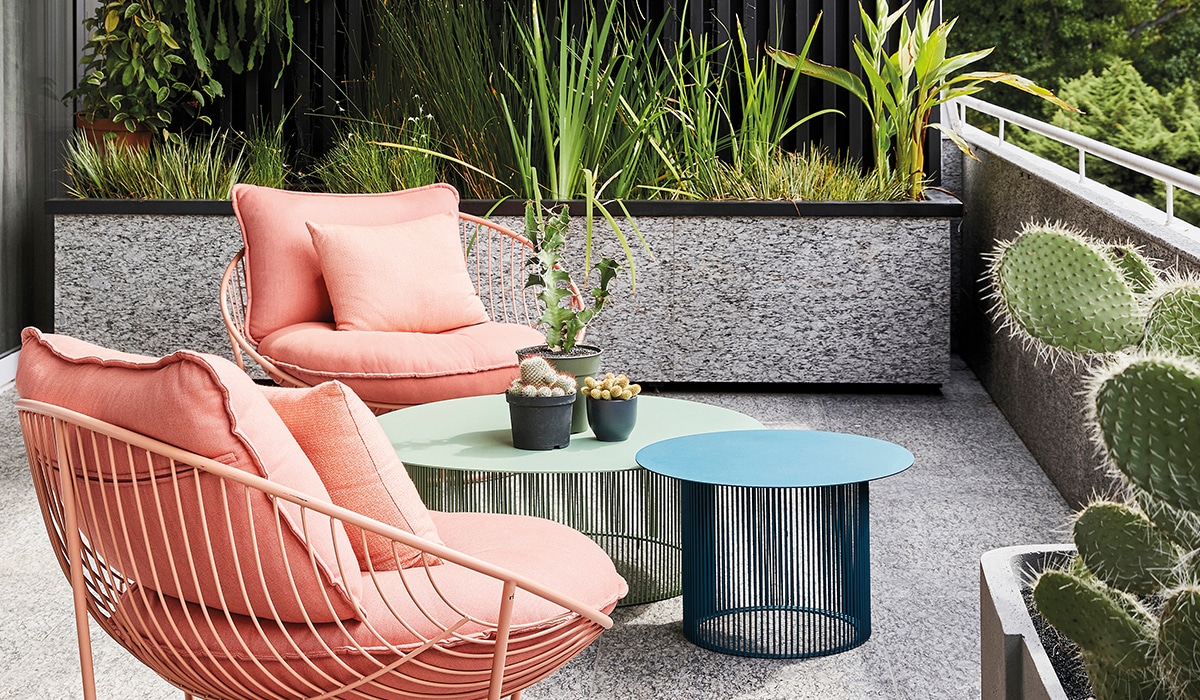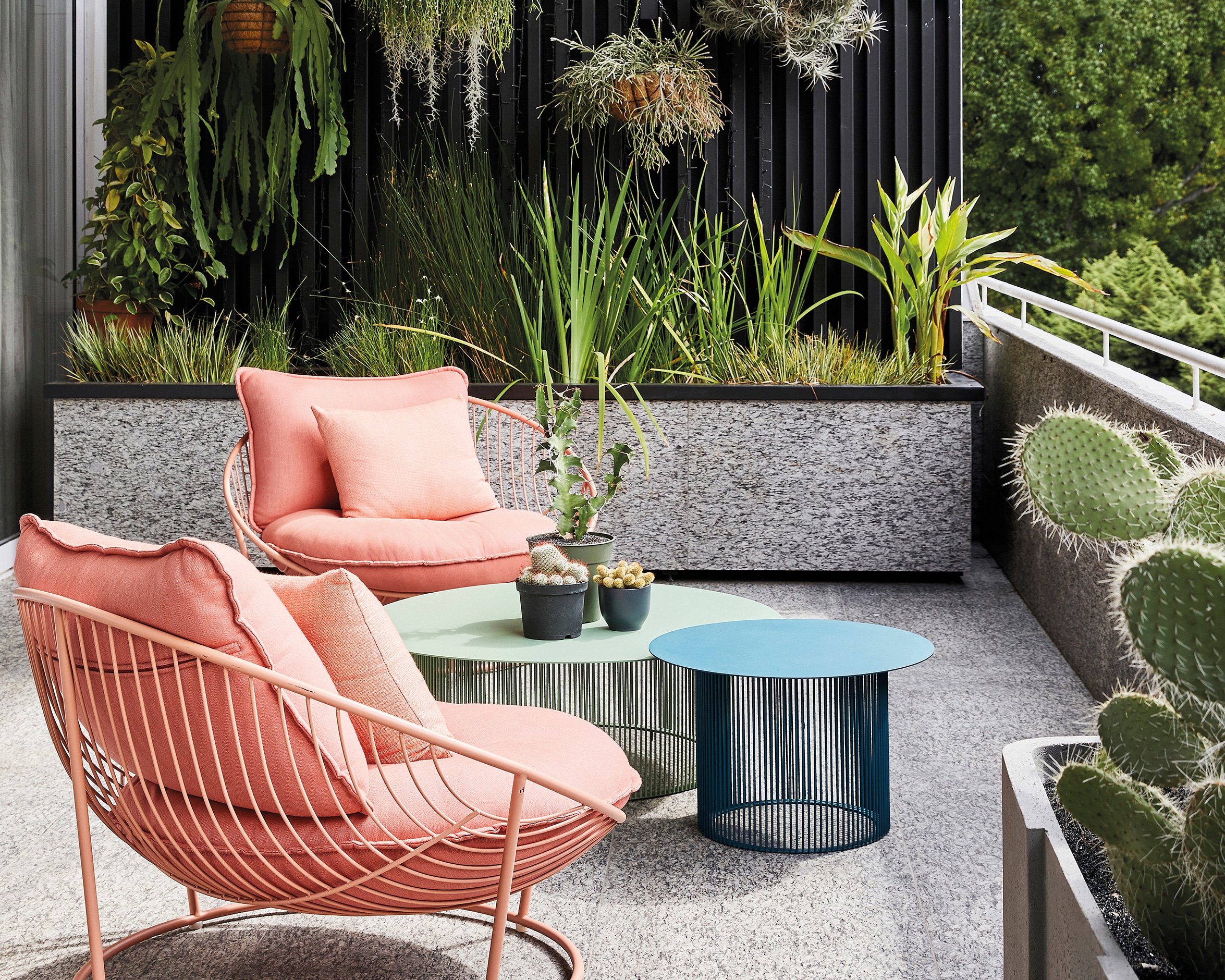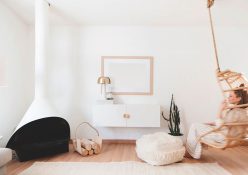Expert tips and creative ideas from interior designer Anushca Dalton on how to style as well as enhance your outdoor living space.
During this transition of seasons from spring into summer, and after being cooped up all winter to keep sheltered from the cold, South Africans are starting to spend more time outside in their gardens, patios and other outdoor spaces. These areas, more especially our patios, are an extension of the home and are often used during times of leisure. This area is truly loved by locals as most homes include one.
Anushca Dalton, interior designer, professional organiser, and owner of The Original Home shares her advice oxn the best way to utilise and maximise your patio all year round. Her vision is to help owners restore the form and function of homes to create a space that offers rest, inspiration, and love.
Meet materiality
A variety of materials can be used for patio furniture including wood, metal, nutec, and canvas. Be sure the items are marked as ‘outdoor-friendly’ or ‘weather-proof.’ Woods that are best used for patio furniture are teak, cypress, cedar, pine and fir. All are durable with proper care, but the strongest is teak and eucalyptus. Metal is a versatile choice that has various finishes – the most popular being steel, wrought-iron, cast-iron and aluminium. The metal allows ornate details to be added to furniture such as chairs and benches.

Friendly fabrics
It goes without saying that outdoor rugs and cushions need to be both weather resistant and easy to clean. Most rugs are made of polypropylene, which is simple to wash or hose down, dries quickly and has no dye sites. Non-active dye sites prevent stains and are easily cleaned with bleach and water solution. The best fabrics for water-resistant furniture cushions are polyester and nylon.
Polyester is a synthetic fabric known for its strength, durability, and water-resistant quality. Polyester is not inherently waterproof, but is less absorbent than natural fibres
like cotton. It can be made completely waterproof with a thermoplastic polyurethane (TPU) coating.
Nylon, on the other hand, absorbs moisture when exposed to water, but it dries quickly and can be made completely waterproof with a durable water repellent (DWR) coating. While these terms sound a bit complicated, they will make your life easier if you ensure your fabrics are properly treated with the necessary coatings.
All about maintenance
Although patio furniture is designed for outdoor use, it still needs maintenance. Wooden furniture should be treated at least twice a year to nourish and seal the wood (or as specified in the care instructions). It’s best to use covers to protect your outdoor furniture during the rainy season or when it won’t be used for an extended period. Wood is also not the only material that requires maintenance, so for spills on fabrics, clean them immediately or follow the provided care instructions.
All the shade
The choice really depends on the atmosphere you want to create. Umbrellas make a patio feel like a holiday resort, while being cost- effective, mobile, and non-permanent. With a larger budget, consider a steel-framed awning with a retractable sail for a more permanent yet versatile option. For year-round use, a solid roof with weather blinds can be zipped closed in winter for protection from the rain and rolled up in summer to let in the sun. Shaded areas are perfect when you’re trying to escape the heat.
Splash on some colour
Start with a neutral canvas and build from there. Traditional options are usually your earthy tones such as tan, ivory and beige. It’s best to choose an accent colour that is subtle but bold in what it brings to the space. Think sage green for example – use it as an introduction of colour through patterns or prints. You can also paint one wall, or part of a wall, in a different shade of your accent colour to tie everything together. There are no restrictions in how to add colour to your patio so be free to experiment!
Creating the flow
Sliding doors are a common way to create a seamless flow between the indoor and outdoor area, but only if you have the space. Consider opting for a stacker door instead of a standard sliding glass door for your patio. This style of sliding door will open the entire width, creating a wider walkway and giving the impression of an extended living area, which is ultimately what we look for when integrating the two spaces.
Keep it private
The most natural way to add privacy to your patio without creating a boxed- in feel is by using plants and trees. Plant them directly into the ground or use pots to create a hedge effect – this will also help to add height. Bamboo is a great option if you want to create a screen style look that adds movement and sound when it rustles in the wind. It can grow in containers, making it a good choice for screening a patio, roof terrace or balcony.
Jasmine, in contrast, offers dense coverage when grown up a trellis. Thanks to its beauty and soft, lingering fragrance, this flora works perfectly near a seating area. When planted in a row, its ornate vines create fluid screens that are also tactile.
And lastly, vines are fast-growing plants that can climb a trellis and cover the top of a pergola, so if you need a quick-fix separation, this would be ideal. If you’re not looking to maintain a living fauna, opt to install screens with artificial plants for the same look and feel without the upkeep.
By: Sahrah Enous
Photographs: Bureaux







